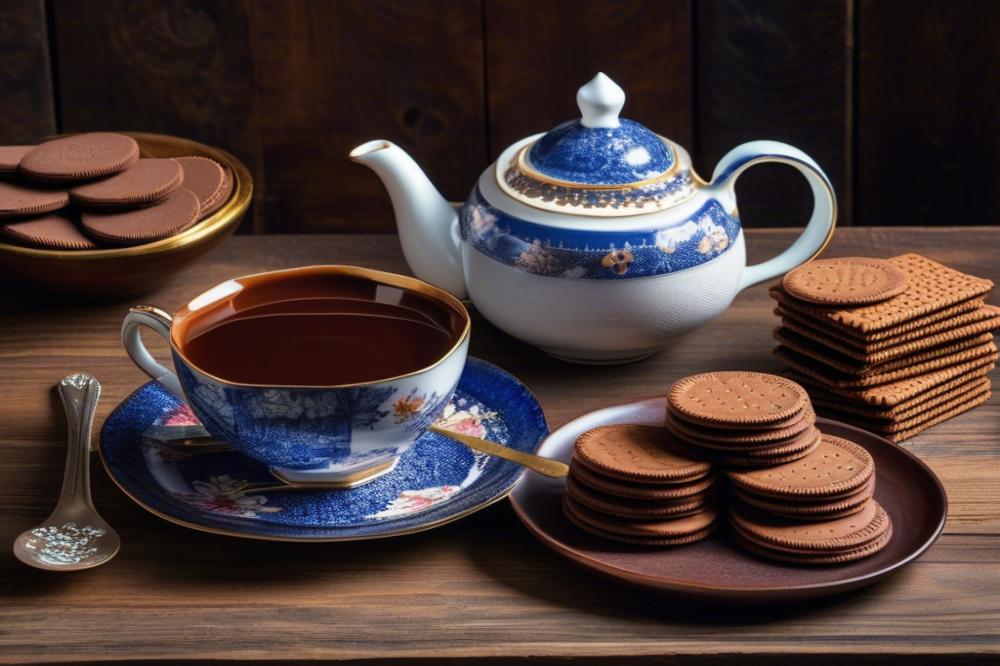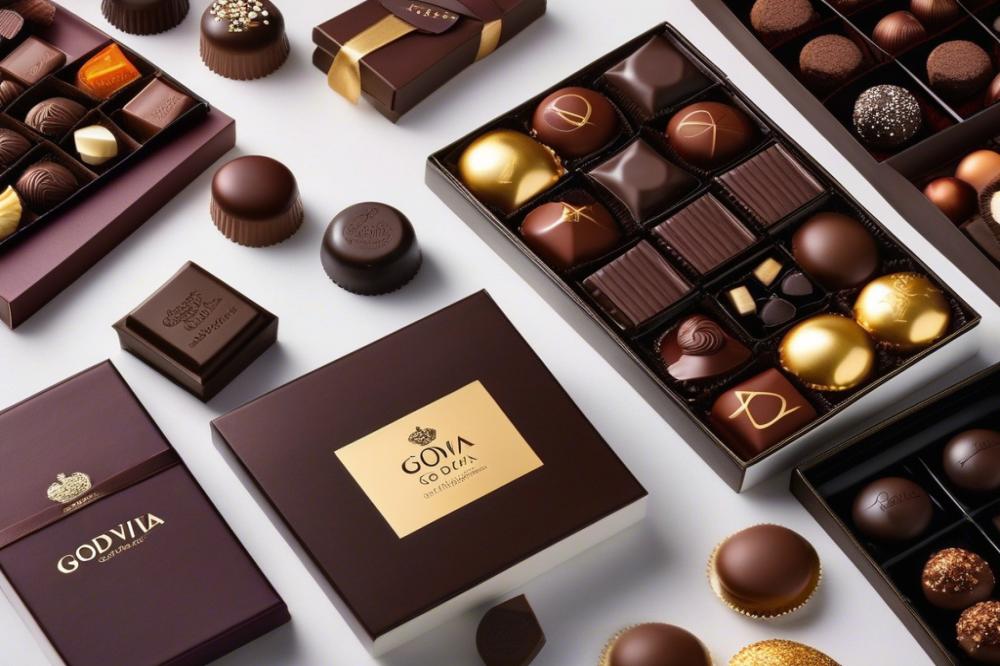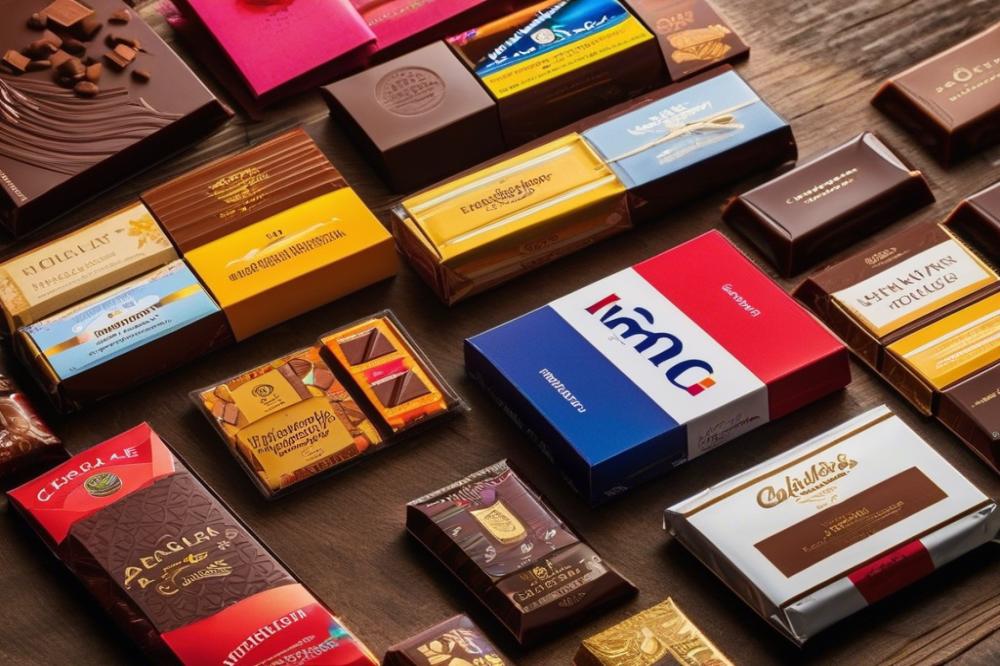How Chocolate Digestives Became a Tea-Time Favorite
Chocolate Digestives have carved a special niche in the hearts of snack lovers, especially in Britain. These biscuits, with their delightful blend of crunchy texture and sweet chocolate coating, have become a staple in British teatime culture. During an afternoon tea, one can often find a plate of these treats, making them synonymous with comfort and tradition.
The history of these beloved biscuits is deeply woven into the fabric of British tradition. They emerged in the late 19th century, originally designed to aid digestion. Over time, however, they evolved into a favorite confectionery item, enjoyed not only for their practical purpose but also for their taste. Generations of tea drinkers have embraced this treat, making them a quintessential part of the tea experience.
In the broader global context, chocolate biscuits transcend borders, appealing to various cultures and cuisines. Countries around the world boast their versions, each adding a unique twist. Despite this variety, Chocolate Digestives hold a pivotal position in the realm of biscuits, celebrated not just as a snack but also as a cherished symbol of British hospitality.
This fusion of history, tea, and confectionery captures the essence of what makes these biscuits a treasured Tea-Time Treat. They represent a moment of pause, a shared experience among friends and family, and an indulgence that brings joy with every bite.
The History of Digestive Biscuits

Digestive biscuits originated in the 19th century, specifically in Scotland. The goal was to create a snack that could aid digestion. Early recipes featured wholemeal flour and baking soda. These ingredients helped produce a hearty, somewhat crumbly texture. This made the biscuits a perfect accompaniment to tea.
Initially marketed as a health food, digestives became popular among the British. As time passed, the recipe evolved. Changes to ingredients introduced variations that appealed to a wider audience. For example, manufacturers began experimenting by adding sugar and flavors. This led to the delicious chocolate-coated versions we enjoy today.
Confectionery innovations played a significant role in the development of digestives. The introduction of cocoa and chocolate provided a rich contrast to the plain biscuit. This combination quickly captured the hearts of many snack lovers. Now, chocolate digestives are a staple for afternoon tea.
Not only do these biscuits represent a beloved snack, but they also embody an essential part of British culture. The tradition of enjoying a cup of tea, coupled with a biscuit, has deep roots. Chocolate digestives have cemented their place in this charming ritual. Their unique flavor and texture make them irresistible.
The history of these treats reveals much about changing tastes and preferences. Over the years, biscuit makers have continued to innovate, creating unique varieties. Today, there are countless versions available, catering to different palates. Each iteration reflects the ongoing evolution of snacks enjoyed during tea time.
The Rise of Chocolate Digestives

The journey of chocolate-infused biscuits began with the evolution of traditional digestive biscuits. These crunchy treats were originally created in the 19th century, known for their digestive health benefits. When chocolate made its debut in the biscuit world, it transformed the plain digestive into something much more enticing. This combination quickly gained traction among consumers.
Several key brands played a pivotal role in this popularization. McVitie’s, a name synonymous with biscuits, launched its chocolate digestive in 1925. This innovation caught the attention of tea drinkers across the nation. As tea-time customs have been a cherished British tradition, the inclusion of chocolate helped push these biscuits into the spotlight. Other brands soon followed suit, eager to capture their share of the burgeoning confectionery market.
Consumer preferences shifted noticeably with the introduction of chocolate flavors in snacks. Many Brits developed a taste for sweet and savory combinations. The allure of indulging in chocolate while sipping tea became irresistible for many. Afternoon tea settings transformed dramatically, often featuring a plate of chocolate-covered biscuits. This delightful pairing encouraged increased sales and introduced new generations to a beloved treat.
Over time, chocolate-flavored snacks created a distinct place in biscuits culture. The craving for more indulgent options has significantly shaped buying habits. Chocolate digestives became a staple in homes and cafes, merging with daily routines. This transformation reflects not only a change in dessert tastes but also a broader culinary evolution.
Chocolate Digestives in British Tradition

In the heart of British culture, afternoon tea holds a cherished place. Over time, chocolate-enrobed biscuits have carved out their niche within this ritual. Their rich flavor pairs seamlessly with a steaming cup of tea, making them a beloved choice for many. The introduction of chocolate digestives into this midday meal has transformed what was once a simple snack into a delightful indulgence.
Historically, biscuits have found their way into British households in various forms. Other well-known varieties, such as custard creams and bourbons, also hold special significance. Each of these treats brings its own unique taste and texture, yet chocolate digestives stand out. Their perfect blend of crunchy biscuit and smooth chocolate creates a memorable experience.
Comfort and relaxation are often linked to tea time. For many, enjoying these treats becomes a ritual after a long day. The simple act of pairing a biscuit with tea can bring a sense of warmth. Moreover, this time often serves as a pause, encouraging conversations and reflections among family and friends. It’s more than just a snack; it’s a delightful moment of connection.
The cultural significance of these treats demonstrates a deep-rooted appreciation for great confectionery. They symbolize a cozy afternoon, where worries fade away, and enjoyment takes the front seat. Chocolate digestives have, without a doubt, become an integral part of the afternoon tea landscape. They embody comfort, making each break a time of sweetness and connection.
Global Influence of Chocolate Digestives
How Chocolate Digestives Compare with chocolate biscuits Worldwide
Chocolate biscuits can be found in many cultures. Each region has its own take on this beloved snack. In the United States, for example, Oreos reign supreme. Meanwhile, Italy boasts the famous Biscotti, which is often paired with coffee. When comparing these treats, one can see the variations in texture and flavor. Digestives are crispier and not overly sweet, while American cookies are often decadent with their cream filling.
Similar Snacks from Different Cultures
Around the globe, several snacks mirror the digestives in purpose and enjoyment. Biscuit culture in Australia features Tim Tams, which offer a delightful chocolate coating. In some Asian countries, mochi can be found as a chewy alternative to traditional biscuits. Both snacks serve as comforting treats during gatherings or breaks. Tea time differs across nations, yet the fondness for a sweet bite remains universal.
Impact of Globalization on Biscuit Consumption
Globalization has transformed how we enjoy biscuits. Now, a variety of snacks from different backgrounds are available in many countries. People can find international products in local supermarkets. This exposure broadens choices and allows consumers to experience flavors previously unknown. British traditions, like afternoon tea, have inspired adaptations worldwide. Countries now create their own versions, blending customs and tastes. The result is a rich tapestry of biscuit-loving societies, where enjoyment spans beyond borders.
Chocolate Digestives Today
Current trends in biscuit consumption are shifting. People often seek out snacks that blend convenience with taste. Healthier options are gaining popularity. However, traditional biscuits still hold a special place in many people’s hearts, especially during tea time. The charming British tradition of afternoon tea continues to thrive. An essential part of this ritual often includes biscuits alongside a steaming cup of tea.
Innovations and New Flavors in the Marketplace
Recently, the biscuit market has seen exciting innovations. Manufacturers are experimenting with various flavors and textures. For instance, dark chocolate versions have caught the attention of consumers looking for richer tastes. Other brands have started introducing limited-edition flavors like salted caramel and orange zest. These unique additions encourage people to explore beyond the classic choices. Additionally, some companies focus on organic and gluten-free options to cater to health-conscious buyers. This variety in offerings ensures that everyone can find a snack that suits their preferences.
Enduring Legacy and Future of Chocolate Digestives
The history of chocolate-covered biscuits has deep roots in British culture. A staple in many households, they evoke nostalgia for many who grew up enjoying them. The consistent popularity of these treats suggests they will remain relevant. As new generations discover their charm, chocolate digestives continue to captivate hearts. Future trends may see them being paired with coffee as well as tea, expanding their appeal even further. This beloved snack has secured its place in the confectionery world and shows no signs of fading away.
The Journey and Cultural Impact of Chocolate Digestives
Recapping the journey of these beloved biscuits reveals a fascinating evolution. From their humble beginnings as plain digestive biscuits to the chocolate-coated delights we know today, they have truly made their mark. The combination of a crunchy texture and rich chocolate has captured the hearts of many, especially during tea time.
This sweet treat has found a special place not just in British households but also in cafes and homes around the world. People enjoy them in various ways, whether paired with a steaming cup of tea or savored as an afternoon snack. Their appeal crosses borders, showing how a simple concept can resonate globally.
Throughout their rich history, Chocolate Digestives have remained a staple for comfort and indulgence. They symbolize more than just a snack; they offer a moment of pause in our busy lives. Each bite brings a taste of nostalgia and warmth, connecting generations through shared experiences of tea time. The joy they bring is universal, making them a cherished part of both British culture and the global confectionery landscape.



